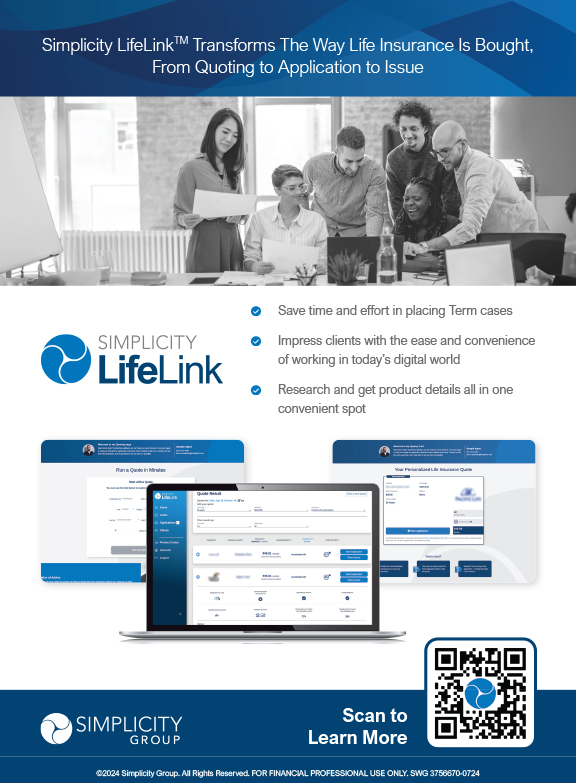What is the impact of the recently passed Tax Reform on federal long term care insurance deductibility for business owners? —Taxed in Texas
Dear Taxed,
The Tax Cuts and Jobs Act (“Tax Reform”) was signed into law in late 2017. It is complex and still being analyzed by tax experts and advisors. In this article, we will explore the possible impact of changes to the tax code and how those changes might affect long term care insurance planning. Since every situation has unique circumstances, and laws are subject to interpretation and change, your client should consult with their tax advisor to see how Tax Reform might affect them. While I’m not licensed to give tax advice, the following information is meant to give a general overview of the recent changes.
Annually, CLTC publishes a one page Tax Summary (https://ltc-cltc.com/pdf/CLTC-2017-Tax-Guide.pdf), which can help you better understand LTCI deductibility.
Tax Reform presents a unique opportunity to have an LTCI planning conversation with your clients. Business owners and tax advisors are focused on analyzing the many changes to the tax code. LTCI can be an integral part of that analysis.
First, let’s discuss what appears “not” to have changed…
The Health Insurance Portability and Accountability Act of 1996 (HIPAA) was enacted to satisfy a number of different public policy objectives including: (1) classifying long term care costs as a medical expense thus providing taxpayers with some economic relief; (2) categorizing long term care insurance as accident and health insurance thereby providing clarity as to the tax treatment of premiums and benefits; and (3) providing the general public an incentive to purchase private long term care insurance.
As a result of treating LTCI similar to accident and health insurance, businesses began to provide this valuable benefit to their owners and employees. Businesses can “carve-out” LTCI plans for owners, select employees, their spouses and dependents. Tax-qualified LTCI reimbursement benefits received are generally not includible in income for the employee despite the fact that premiums are deducted by the employer. This differs from other employer paid plans (i.e. disability insurance) where benefits can be taxable to the employee if the premiums were deducted by the business.
Businesses that file their taxes as C Corporations can generally deduct all LTCI premiums under the plan subject to the requirement that the total compensation is reasonable for services that the employee provides to the business.
Businesses that file their taxes as S Corporations (where income passes through to the owner’s individual tax return) can also deduct premiums paid for LTCI. Like accident and health insurance, LTCI premiums for a two-percent-plus owner in an S Corporation may be claimed as an above-the-line (not itemized) self-employed health insurance deduction on line 29 of the 2017 IRS Form 1040. Two-percent-plus owners of an S Corporation have an annual dollar limit on the amount of the premium deduction based on the age of the owner during the calendar year when the deduction occurs – limited to the lesser of actual premium paid or eligible LTCI premiums. This tax treatment not only applies to S Corporations, but also Sole Proprietors, Partnerships, and some Professional Service Corporations (i.e. doctors, lawyers, or accountants).
The precise treatment of the LTCI deduction depends on the type of business entity.
There are changes in Tax Reform that may have an indirect impact on the amount of tax savings related to LTCI deductions.
1. Changes to the overall tax rates for businesses and individuals
Tax Reform changes both the corporate and individual tax rates. The highest C Corporation tax rate changes from 35 percent to 21 percent and the highest individual tax rate changes from 39.6 percent to 37 percent. Later in this review, we will look at estimated after-tax costs of LTCI plans for a hypothetical client given these new tax rates.
2. Changes to other deductions that might affect LTCI tax savings
The state and local tax itemized deduction for individuals on the federal tax return has been changed under the new law. This could increase federal taxable income especially for those in high income tax states. As such, LTCI deductions may be more desirable than before to take on state income tax returns.
3. Changes to the CPI methodology for the Age Eligible LTCI Premium limits
The age-based annual deductibility limits changed from CPI to “Chained CPI.” This is unlikely to have a major impact. Overall Chained CPI has increased 2.11 percent annually since 2001 as compared to CPI, which has increased 2.33 percent annually. The Age Eligible LTCI limits are linked to the medical care component of CPI.
Inside the Numbers
Different entity types will likely yield different estimated dollar tax savings for a business owner paying LTCI premiums using the corporate checkbook:
- Owner of a C Corporation = Premiums Deducted (not limited) x Corporate Tax Rate.
- Two-percent-plus owners of an S Corporation = An amount equal to the S Corporation’s deducted LTCI premiums is pass-through income to the owner’s individual tax return. The business owner can then deduct the premiums (limited by dollar amount based on age) x Individual Tax Rate. The actual dollar tax savings will depend on many factors related to the owner’s overall individual tax return.
Let’s take a look at an example. A 60 year old couple (business owner and spouse) are looking to implement a long term care plan after having just finished taking care of one of their parents. They learn from their advisor that LTCI can not only provide significant asset protection, but the benefits received are tax-free. Both individuals are very healthy and have been pre-qualified for the best underwriting class. After a conversation to learn about the client’s needs, budget and desires, the advisor designed a long term care insurance plan that will cost approximately $2,500 per person, or $5,000 combined.
Let’s see how much tax savings they could achieve by deducting the LTCI premiums.
First, let’s assume they own a C Corporation. As a result of Tax Reform, the highest federal corporate tax rate is 21 percent. Their premiums are fully deductible and they could save $1,050 ($5,000 x 21 percent). As a result of this deduction, the net cost of the LTCI plan after tax savings is essentially $3,950.
Now, let’s assume they own an S Corporation. After Tax Reform their top federal individual tax rate is 37 percent. In 2018, based on their age (60), they are eligible to deduct up to $1,560 per person (or a combined $3,120) based on the Internal Revenue Code Section 213 shown in table 1.
The tax savings could therefore be about $1,154 ($3,120 x 37 percent). When they turn 61 in 2019, the eligible LTCI premium deduction limit may be higher. But, let’s assume that it will still be $4,160 per person (or a combined $8,320 for both of them based on the 2018 limits). They can deduct the combined $5,000 premium in full with a resulting tax savings of $1,850 ($5,000 x 37 percent). As a result of this deduction, the net cost of the LTCI plan after tax savings is essentially $3,150.
An owner of an S Corporation might be able to have a higher dollar tax savings because their individual tax rate is higher than the C Corporation tax rate.
In addition to the advantage of deducting LTCI premiums, using a 10-year premium payment option might maximize this opportunity, and benefit the owner and employees by having the plan fully paid up before retirement.
In conclusion
Tax Reform, now more than ever, represents a great opportunity to approach tax advisors and business owner clients. There are roughly 28 million small businesses in the US. The potential opportunity within your own network is greater than ever before.
Before April 15: Do you have current LTCI clients that own a business, have long term care insurance, but are possibly not taking advantage of tax deductibility? You can add value to them by educating them on tax savings they might not know are available.
After April 15: A great time to approach tax advisors! They’ve just completed prior tax year filings and have time to listen to how you can help them and their clients.
Recently, I was speaking with someone whose CPA had not been utilizing the self-employed LTCI tax deduction on their own tax return! Don’t let this happen to your clients or their advisors. Become the go-to person in your community as a resource for everything related to long term care insurance planning.
If you are aware of other Tax Reform changes that impact LTCI, drop me a note or send me an e-mail. I’d love to hear from you!

























